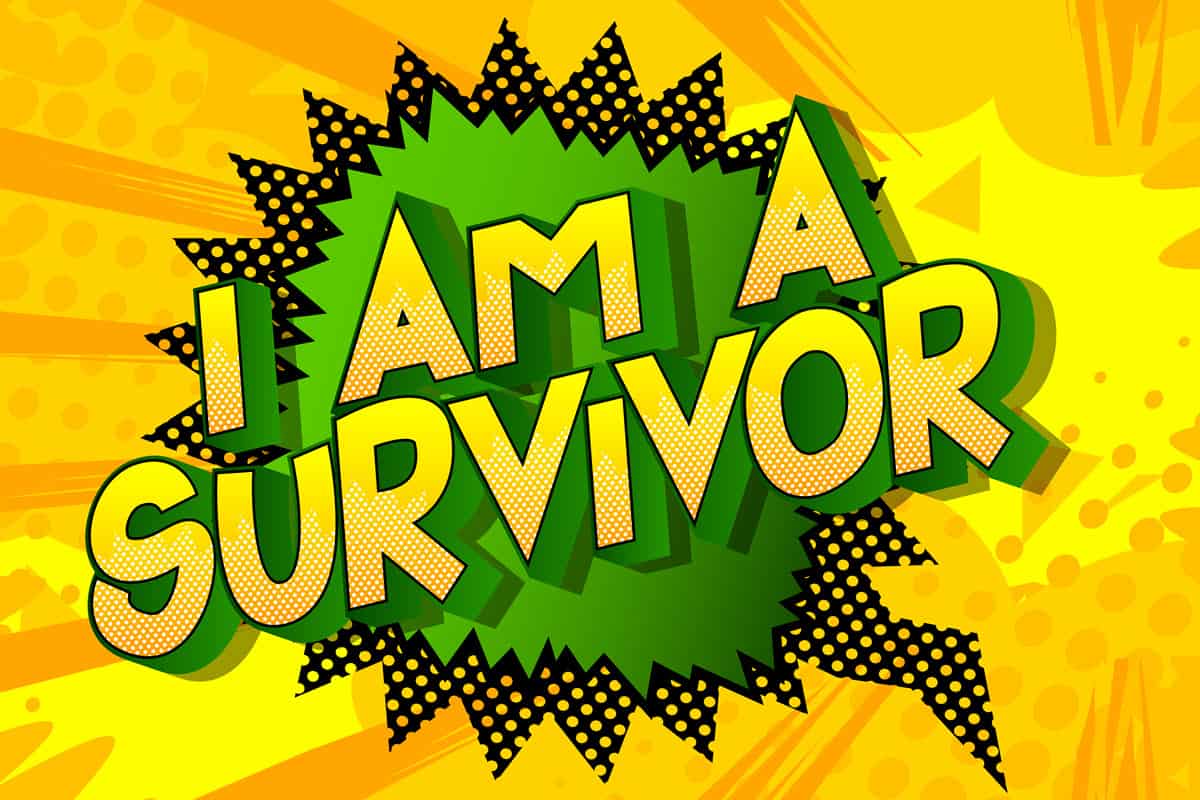
This guide is a comprehensive resource for beginners on how to start prepping, covering everything from basic survival necessities to advanced strategies for self-reliance.
Key Takeaways:
- Understanding Basic Needs: Recognize your basic needs and potential threats, including stocking up on essential supplies like water, food, first aid kits, hygiene products, and sanitation supplies.
- Food Supply and Nutritional Needs: Understand the importance of strategic planning for food supply, including understanding nutritional needs and choosing the best food options for long-term storage.
- Water Storage and Filtration: Understand the importance of water storage and filtration, including planning for different scenarios and knowing how to purify water.
- Home Preparedness: Prepare your home for potential lockdown scenarios, including having a reliable power source, a way to cook food without electricity, and measures to secure your home.
- Bug-Out Bag: Prepare a bug-out bag that holds everything you need to survive for at least 72 hours after evacuating from a disaster quickly.
- Preparing for Emergencies Away From Home: Have a plan for emergencies when you’re away from home, including having a get-home bag (GHB), everyday carry (EDC) items, vehicle preparedness, and a plan for getting home or to a safe location.
- Essential Survival Skills: Learn and practice survival skills, including first aid and CPR, fire making, food foraging and hunting, navigation, knot tying, water purification, shelter building, and signaling for help.
- Networking and Continuous Learning: Understand that prepping is a continuous process of growth and refinement and the importance of sharing knowledge, experiences, and resources with like-minded individuals.
- Advanced Prepping: As you become more comfortable with basic prepping, consider learning advanced topics such as advanced first aid, off-grid living, or homesteading skills.
- FAQ for Preppers: The article also includes a FAQ section that answers common questions about prepping, such as what is prepping, why you should start prepping, what is a prepper, what is a bug out bag, what is SHTF, what is a bunker, what should be included in an emergency survival kit, how much food and water should be stored for emergencies, and what are some things to consider when prepping.
Table of Contents
- How To Start Prepping
- Step 1: Food and Water
- Step 2: Preparing Your Home for Self-Reliance
- Step 3: Prepare a Bug-Out Bag
- Step 4: Preparing for Emergencies Away From Home
- Step 5: Essential Survival Skills
- Step 6: Network With Others and Continuing to Learn
- FAQ for Preppers
- What is prepping?
- Why should I start prepping?
- What is a prepper?
- What are some basic steps to effective prepping?
- What is a bug out bag?
- What is SHTF?
- What is a bunker?
- What should be included in an emergency survival kit?
- What should I do if I’m new to prepping?
- How much food and water should be stored for emergencies?
- What are some things to consider when prepping?
Personal Risk Assessment
One of the first steps in starting your prepping journey is conducting a personal risk assessment.
An assessment involves evaluating the types of emergencies or disasters most likely to occur in your location. By understanding your specific risks, you can prioritize your prepping efforts and ensure you’re prepared for the most probable scenarios.
To assess your risks, consider the following factors:
- Natural Disasters: Research the types of natural disasters common in your region. Disasters may include hurricanes, tornadoes, earthquakes, wildfires, floods, or severe winter storms. Understand the potential impact of these events on your home, community, and infrastructure.
- Man-made Threats: Evaluate the likelihood of man-made disasters in your area, such as industrial accidents, chemical spills, or acts of terrorism. Consider your proximity to potential targets like power plants, transportation hubs, or major cities.
- Public Health Emergencies: Assess the risk of public health crises, such as pandemics or disease outbreaks. Consider factors like population density, access to healthcare, and the potential for widespread transmission.
- Economic Instability: Evaluate the stability of your local and national economy. Consider the potential for job loss, financial crises, or supply chain disruptions that could impact your ability to access essential goods and services.
- Personal Circumstances: Assess any unique risks specific to your situation, such as medical conditions requiring ongoing treatment or living in a remote location with limited access to resources.
By conducting a thorough risk assessment, you can identify the most likely disasters you may face and tailor your prepping strategies accordingly.
This targeted approach ensures that you allocate your resources effectively and prioritize the most critical areas of preparedness.
Remember, while it’s important to prepare for the most probable risks, it’s also wise to maintain a well-rounded approach to prepping. Building a solid foundation of essential supplies, skills, and knowledge will serve you well in a wide range of emergencies.
Creating Your Family Emergency Plan
A comprehensive family emergency plan is crucial for preparing your household for potential disasters or emergencies. Here are some key steps to follow when creating your plan:
- Discuss potential emergencies: Have a family meeting to discuss the types of emergencies most likely to occur in your area, such as natural disasters, house fires, or power outages. Make sure everyone understands the potential risks.
- Identify safe locations: Determine the best places in your home to shelter during emergencies like tornadoes or hurricanes. Also, agree on a family meeting spot outside the home, such as a neighbor’s house or local landmark, in case you need to evacuate.
- Plan evacuation routes: Map out multiple evacuation routes from your home and neighborhood in case main roads are blocked. Make sure everyone in the family is familiar with these routes.
- Assign responsibilities: Give each family member specific duties to perform during an emergency, like gathering supplies, assisting younger children, or securing pets. Make sure these responsibilities are age-appropriate.
- Establish communication methods: Decide how you will communicate and reconnect with each other if separated. Identify an out-of-area emergency contact that everyone can notify to report their status and location. Make sure kids know when and how to call 911.
- Maintain emergency information: Make a list of important information like insurance policies, identification, and medical needs, and keep both a physical and digital copy that can be accessed during an emergency.
- Assemble disaster kits: Gather supplies for stay-at-home and evacuation situations, including food, water, first aid, flashlights, batteries, medications, and important documents. Keep a kit at home, at work, and in your vehicles.
- Practice your plan: Run family drills regularly so everyone can practice their responsibilities and know what to do. This helps identify any gaps in your plan. Review and update your plan annually or as your family’s needs change.
Remember, a family emergency plan should be tailored to your household’s unique needs, considering medical conditions, disabilities, pets, and young children. By involving the whole family in the planning process, everyone will be better prepared to face potential emergencies calmly and safely.
Family Emergency Plan Template
Family Information
- Family Name:
- Address:
- Phone Numbers:
- Email Addresses:
Emergency Contacts
- Out-of-Area Contact Name: Phone Number:
- Email Address:
- Local Emergency Services: Police Department:
- Fire Department:
- Hospital:
Potential Emergencies
List the most likely emergencies in your area:
1.
2.
3. Safe Locations
- Indoor Shelter Location:
- Outdoor Family Meeting Spot:
- Alternate Meeting Spot:
Evacuation Routes
- Primary Route:
- Secondary Route:
- Tertiary Route:
Family Member Responsibilities
- Family Member 1:Responsibility 1:
- Responsibility 2:
- Family Member 2:Responsibility 1:
- Responsibility 2:
Communication Methods
- Primary Method:
- Secondary Method:
- Social Media Platforms:
Important Information
- Insurance Policies:
- Medical Information:
- Identification Documents:
- Pet Information:
Disaster Kit Locations
- Home:
- Work:
- Vehicle:
Emergency Plan Practice Dates
- Date 1:
- Date 2:
- Date 3:
Plan Review and Update
- Last Review Date:
- Next Review Date:
Additional Notes:
Remember to keep a physical copy of this plan in your disaster kits and a digital copy that can be accessed remotely. Ensure all family members have a copy and understand their roles and responsibilities.
Download PDF – Emergency Plan Template
How To Start Prepping
Step 1: Food and Water
The first step in becoming a prepper is to create a solid foundation. This involves understanding your needs, identifying potential threats, and stocking up on essential supplies. A key aspect of this foundational stage is understanding the “evergreen products.” Regardless of the disaster scenario, you will always need these items, such as water reserves, emergency food supplies, first aid kits, hygiene products, and sanitation supplies.
Food Supply
Food is one of the most critical components of any preparedness plan. The importance of having a well-stocked food supply cannot be overstated. However, food prepping goes beyond just filling your pantry with canned goods. It’s about strategic planning, understanding nutritional needs, and knowing the best food options for long-term storage.
See our Foods That Last a Long Time for more information.
Understanding Nutritional Needs
Every individual’s caloric and nutritional needs vary depending on factors like age, sex, activity level, and body type. In a survival situation, maintaining energy levels becomes crucial, so it’s essential to plan your emergency food supply based on each household member’s specific nutritional requirements.
High-protein and high-energy foods are particularly valuable in a crisis scenario, as they offer sustained energy and are often packed with essential nutrients. Remember, younger adults and children typically require more calories because their bodies are still actively growing. As you age, you need to consume fewer calories. Men generally consume more calories than women, and your activity level also influences how many calories you should consume.
Stockpile the Right Foods
Start your food prepping by focusing on long-lasting, nutritionally dense foods. Here are some food categories you should consider:
- Freeze-dried foods: Due to their extended shelf life, freeze-dried foods are excellent for long-term food storage. They’re lightweight, easy to store, and just require water to rehydrate and consume. Freeze-dried fruits, vegetables, and meats are all great options that provide essential nutrients.
- Canned Goods: Canned foods are a staple in any prepper’s pantry. They have a long shelf life and come in a wide variety of sizes, including the always popular number 10 can. Be sure to include a mix of proteins (like canned meats and beans), fruits, vegetables, and ready-to-eat meals.
- Grains and Pasta: Foods like rice, quinoa, and pasta are calorie-dense and can be stored for extended periods. They’re versatile base ingredients that can be used in a variety of meals.
- Dried Beans and Legumes: Dried beans, lentils, and peas are an excellent source of protein and fiber. They’re also compact and have a long shelf life.
- Powdered Milk and Dairy: Powdered milk, cheese, and butter can provide essential dairy nutrients and are perfect for long-term storage.
- Seeds and Nuts are great sources of protein, healthy fats, and other nutrients. If kept in airtight containers, they can be stored for a long time.
Remember to rotate your food supply to ensure you use items before expiration. Also, always store your food in a cool, dry location to maximize its shelf life.
Tip: Check out our Prepper Food Storage Guide for more food storage. Medicines are also part of prepping, and shelf life is important for those too; see Do Epsom Salts Expire?
Ensuring You Have Enough Food
Aim to start with at least two weeks of emergency food, but remember that more seasoned preppers often have 6-24 months worth of food stored. The more emergency food you stock, the longer it will last, and the better prepared you will be. Take time to calculate how much food you’d need for your household for different periods – two weeks, a month, six months, etc., and plan your food prepping accordingly.
Strategic food prepping is about more than just stockpiling food; it’s about understanding nutritional needs, choosing the right foods, and planning for the long term. By dedicating time and thought to this process, you can create a food storage system that will serve you and your family well in any emergency.
Water Storage and Filtration
Water is a fundamental requirement for life, making it an essential part of any preparedness plan. A person can only survive a few days without water, so having a secure supply in an emergency situation is crucial. But water storage isn’t just about keeping a stash of bottled water. It also involves understanding water needs, planning for different scenarios, and knowing how to purify water to make it safe for consumption.
Understanding Water Needs
The general guideline for water storage is to have at least one gallon of water per person per day. This amount should cover both drinking and sanitation needs. However, remember that specific needs may vary depending on age, physical condition, activity level, and climate. For instance, children, nursing mothers, and ill people may need more water. If you live in a hot climate or have a high activity level, your water needs may also be higher.
Options for Water Storage
When storing water, it’s crucial to use safe containers meant for long-term storage. These containers should be clean, durable, and food-grade, meaning they don’t transfer harmful substances into the water.
- Commercially Bottled Water: This is the most straightforward option for water storage. These bottles are usually safe for long-term storage if kept sealed, away from chemicals, and in a cool, dark place.
- Water Storage Containers: You can find containers specifically designed for long-term water storage, ranging from small, portable containers to large tanks that can hold hundreds of gallons.
- Water Barrels: Water barrels, often available in 55-gallon sizes, can be a good option if you have space and aim to store a large amount of water.
Remember to store water in different-sized containers to provide versatility for various situations. Large barrels can serve as your main water source, while smaller, portable containers can be useful if you need to evacuate.
Water Filtration and Purification
In addition to storing water, it’s crucial to have ways to purify water to make it safe for drinking. Natural disasters and other emergencies can disrupt water supplies or contaminate available water sources. Here are some water purification methods:
- Boiling: This is the simplest and one of the most reliable ways to purify water. Boil water for at least one minute to kill most types of pathogens.
- Water Filtration Systems: Various water filters are on the market designed to remove bacteria, parasites, and other contaminants. They range from small portable filters to larger countertop or gravity-fed systems.
- Water Purification Tablets: These tablets contain chemicals that kill bacteria and parasites in the water. They’re lightweight, easy to carry, and good to have in a bug-out bag.
- Ultraviolet (UV) Light Units: UV light can kill bacteria and other pathogens. Portable UV purifiers are available, which are useful for purifying water from sources like rivers and lakes when on the move.
By understanding your water needs, strategically storing water, and knowing how to purify water, you can ensure that you and your family will have access to safe drinking water in any emergency situation.
Step 2: Preparing Your Home for Self-Reliance
Once you’ve covered the basics of food and water storage, the next step is preparing your home for a potential lockdown scenario. This means ensuring you have the tools and supplies you need to stay self-sufficient for at least two weeks without leaving your home.
Consider a reliable power source like a generator or solar panels, a way to cook your food without electricity, and measures to secure your home from potential threats. This could also involve setting up a home garden to supplement your food stockpile or installing rainwater collection systems to boost your water supply.
Food and Water Supply
As we’ve previously discussed, stockpiling a sufficient supply of food and water is fundamental. For a two-week period, this means storing at least 14 gallons of water per person and an ample supply of non-perishable food items. Ensure you have a variety of food options to prevent dietary fatigue and cater to different nutritional needs. Don’t forget to consider any special dietary requirements of family members.
Home Preparedness
Making your home resilient and safe during emergencies is crucial. This involves regular maintenance checks, ensuring your home is well-insulated, and securing any potential hazards that could cause harm during disasters like earthquakes or hurricanes.
Energy and Heat Source
Consider your energy needs during a two-week period of self-reliance. If the power goes out, do you have a way to cook your food and heat your home? Backup energy solutions like generators, solar chargers, and alternative heating sources like wood-burning stoves can be invaluable.
Health and Hygiene
A first aid kit stocked with necessary medications, bandages, antiseptic wipes, and other essentials should be part of your supplies. Don’t forget about personal hygiene and sanitation supplies, including soap, toothpaste, toilet paper, and items for a makeshift toilet if necessary.
Communication
In times of emergency, staying informed is critical. A battery or crank-powered radio can keep you connected with the outside world. Also, consider a solar charger for your cellphone.
Entertainment
Two weeks can be a long time, especially under stressful conditions. Including items for entertainment can help maintain morale. This could be books, board games, cards, or craft supplies.
Skills and Knowledge
Finally, having the right skills and knowledge is just as crucial as physical supplies. This includes knowing how to use your supplies, basic first aid, how to cook without electricity and general survival skills.
Preparing for two weeks of self-reliance involves both tangible supplies and knowledge. By addressing each of these areas, you’ll be well-equipped to sustain yourself and your family for a two-week period without outside help.
Step 3: Prepare a Bug-Out Bag
A bug-out bag is a critical part of any prepper’s arsenal, designed to hold everything you need to survive for at least 72 hours after evacuating from a disaster quickly.
Here’s how to assemble an effective bug-out bag:
Choose the Right Bag
Start with a durable, comfortable, and waterproof backpack. Look for something with ample space and multiple compartments for organized packing. A pack with padded straps and an ergonomic design will be more comfortable to carry over long distances.
Water and Food
Hydration bladders and water purification tablets or filters are essentials for maintaining hydration on the go. Pack high-energy, lightweight, and non-perishable food items like energy bars, nuts, and freeze-dried meals that require minimal preparation. Instead of having a separate stash in your bug-out bag, you might choose to be prepared to pack up items from your prepping pantry instead.
Shelter and Warmth
Include a lightweight tent or emergency bivvy sack for shelter. Pack a compact sleeping bag designed for low temperatures and a space blanket for warmth. Consider including a small, portable stove and fuel for cooking and warmth.
Clothing
Pack a change of clothes suitable for the weather in your area. Always include a waterproof jacket, durable pants, and a pair of sturdy, comfortable shoes. Don’t forget thermal underwear and woolen socks for colder climates.
First Aid Kit
A compact but comprehensive first aid kit is vital. Include bandages, antiseptic wipes, tweezers, medical tape, pain relievers, and any necessary prescription medications.
Tools
A multi-tool, a sturdy knife, a flashlight (preferably a headlamp for hands-free use), extra batteries, a firestarter, and 50 feet of paracord are all useful additions. If you have room, consider a compact shovel or a saw.
Personal Items
Include personal hygiene items like travel-sized toiletries, wet wipes, and a small towel. Don’t forget important personal documents (or copies of them), cash, and a map of your local area.
Communication
Pack a battery or crank-powered radio to receive news updates. A whistle can be useful for signaling for help.
Every item in your bug-out bag should serve a purpose, and remember; it should be light enough for you to carry over long distances. Regularly review and update your bag’s contents to ensure everything is in good condition and still meets your needs. Remember, the best bug-out bag is the one tailored to your personal needs and circumstances.
- TASTES GREAT: Ready Hour Freeze dried fruits and veggies are made for emergencies but tasty enough for everyday use.
- BE PREPARED: The world is unpredictable. Be ready for anything with our durable and flood-safe container which features a convenient handle for easy transport. Requires no refrigeration.
- 30 YEAR SHELF LIFE: Includes 56 total servings. Can be stored anywhere that offers a cool and dry environment.
- USE ONLY WHAT YOU NEED: Made for multiple uses; includes seven resealable pouches that let you use only what you need and save the rest for later. Re-sealed pouches last up to a year.
- MADE IN THE USA: We’re proudly based in Salt Lake City, Utah.
- 204 Servings
- 7,140 Calories
- Perfect For Food Storage, Emergencies, Survival, Camping, And Everyday Use!
- Certified Gluten-Free
- Up To A 10 Year Shelf Life!
- TASTES GREAT: Ready Hour freeze-dried food is designed for emergencies but tasty enough for everyday use.
- BE PREPARED: The world is unpredictable. Be ready for anything with our durable and flood-safe container which features a convenient handle for easy transport. Requires no refrigeration.
- LASTS UP TO 25 YEARS: Includes up to 120 total servings. Can be stored anywhere that offers a cool and dry environment.
- USE ONLY WHAT YOU NEED: Made for multiple uses; includes 22 resealable pouches that let you use only what you need and save the rest for later. Re-sealed pouches last up to a year.
- MADE IN THE USA: We’re proudly based in Salt Lake City, Utah.
- COMPREHENSIVE EMERGENCY FOOD SUPPLY – Augason Farms all-in-one 4-gallon meal prep containers provide 92 satisfying servings with a total of 21,170 calories and 557 grams of protein to support daily energy needs in emergencies. It’s a dependable solution for shelter-in-place orders, natural disasters, or unexpected evacuations at home or on the road.
- 11 COMPLETE MEAL VARIETIES – Enjoy a comforting selection of 11 great-tasting meals with our camping essentials, including Italiano Marinara Pasta, Creamy Stroganoff, Hearty Vegetable Soup, Mac & Cheese, Chicken-Flavored Rice, Chocolate Pudding and more. Designed to offer variety, nutrition, and convenience, these meals satisfy both taste and dietary needs.
- LONG-LASTING SHELF LIFE – Each meal is packaged to retain freshness and flavor with shelf lives ranging from 10 to 25 years*. This makes our survival kit ideal for emergency kits, preparedness planning, or long-term storage, giving you peace of mind whether you’re preparing for natural disasters or remote living.
- CONVENIENT STORAGE AND PORTABILITY – This compact, space-saving food storage pail is made for grab-and-go convenience and safe storage. Its secure lid and watertight seal protect contents from moisture and pests, perfect for storing in garages, basements, cabins, or vehicles.
- QUICK AND EASY MEAL PREPARATION – Each meal is simple to prepare with our meal prep pail—no cooking experience needed. Just add water, stir, and enjoy a hot, comforting dish in minutes. Perfect for power outages, emergencies, busy schedules, or outdoor adventures where time and resources are limited.
Step 4: Preparing for Emergencies Away From Home
Being prepared isn’t limited to your home environment. Emergencies can strike when you’re away from your safe haven, and having a plan for such situations is crucial. Here’s how to prepare for emergencies when you’re away from home:
Get Home Bag
A get-home bag (GHB) is an essential part of your preparedness plan when you’re away from home. This is a bag you keep in your car or at your workplace, packed with essential supplies to help you get back home safely in an emergency.
Your GHB should include items similar to a bug-out bag but on a smaller scale. It should contain water, non-perishable food, a small first aid kit, a flashlight, a multi-tool, a space blanket, and a map of your local area. A change of clothes and comfortable walking shoes are also advisable.
Everyday Carry (EDC) Items
Everyday carry items are things you have on you at all times. These could include a compact flashlight, a small multitool, a lighter or matches, a small first aid kit, a whistle for signaling, and a portable phone charger. A compact water filter could also be a lifesaver if you’re far from any clean water sources.
Vehicle Preparedness
Your vehicle should also be prepared for emergencies. Always keep your gas tank at least half full. Include a basic tool kit for minor repairs, jumper cables, a spare tire, and a car jack. Also, consider packing blankets, additional clothing, non-perishable food, water, and a first aid kit in your vehicle.
Plan and Practice
Have a plan for getting home or to a safe location in case of an emergency. Familiarize yourself with multiple routes and consider various forms of transportation. Practice your plan to ensure its feasibility.
Remember, the goal when you’re away from home during an emergency is to get to a safe place – ideally, your home – as quickly and safely as possible. By preparing effectively, you can increase your chances of doing just that.
Step 5: Essential Survival Skills
Learning and practicing survival skills is a vital part of being a prepper. These skills not only increase your chances of surviving a disaster, but they also make you more confident and efficient in your daily life. Below are some essential survival skills that every prepper should master:
First Aid and CPR
Knowing how to administer first aid and CPR is crucial. It’s not just about being able to help others in an emergency; it’s also about being able to help yourself if you’re alone or isolated. Take a certified course and get hands-on practice.
Fire Making
Fire is an essential tool for survival. It provides warmth, allows you to cook food, purify water, and ward off predators. Learn several methods of fire-making, including using a lighter, matches, fire steel, and friction-based methods.
Check out our how to start a fire without matches or a lighter and how to build a campfire post to learn some valuable fire-starting skills.
Food Foraging and Hunting
You may have a stockpile of food, but in a long-term survival situation, you might need to supplement your stores. Learning how to identify edible plants, fish and hunt can be a lifesaver.
GPS devices and smartphones are fantastic tools, but batteries die, and signals can be unreliable. Learn how to navigate using a map and compass. Understanding basic orienteering skills can get you out of a tricky situation.
Knot Tying
Knot tying may seem like a simple skill, but it has a wide range of applications in a survival scenario. From setting up a shelter to fishing, proper knot-tying is a valuable skill to learn.
Water Purification
You’ve stored water, but in a long-term emergency, you’ll need to find and purify more. Learn about different methods of water purification, including boiling, chemical treatment, and filtration.
Shelter Building
In a situation where you’re away from home or need to evacuate, understanding how to build a bushcraft survival shelter from natural materials can keep you safe from the elements.
Signaling for Help
If you’re lost or stranded, you need to know how to signal for help. This can be as simple as understanding three fires or blasts of a whistle are a universal distress signal.
The key to these skills is practice. Don’t just learn them and forget them. Regularly practicing your survival skills ensures they’ll be there when you need them.
Learning how to make a homemade torch is also a great way to make sure you always have fire available to start your signal fire.
Step 6: Network With Others and Continuing to Learn
The journey to becoming a seasoned prepper doesn’t stop at acquiring supplies and learning survival skills. It’s a continuous process of growth and refinement. Moreover, prepping doesn’t have to be a solitary endeavor. Sharing your knowledge, experiences, and resources with like-minded individuals can create a supportive community that can weather any storm together.
Sharing Knowledge and Experiences
Every prepper has a unique set of skills and experiences that can be valuable to others. By sharing your knowledge, you can help others in their prepping journey and learn from their experiences in return. This can be done through online forums, local meetups, or even casual conversations with friends and family.
Recruiting Like-Minded Individuals
Creating a network of like-minded individuals can significantly increase your chances of survival in a disaster. This doesn’t mean you need to start a prepping group or join a militia. Simple actions like encouraging a neighbor to keep a supply of water or teaching a friend how to make a fire can create a supportive community in times of crisis.
Continuing Education
The field of emergency preparedness and survival is vast and constantly evolving. Make a point to regularly update your knowledge and skills. This could be through reading books, attending workshops, or subscribing to relevant blogs and YouTube channels.
Going Beyond the Basics
As you become more comfortable with basic prepping, consider delving deeper into more advanced topics. This could include learning advanced first aid, off-grid living, or even homesteading skills. Remember, prepping is a journey, not a destination; there’s always more to learn.
Remember, prepping is not about living in constant fear of disaster but about being prepared and confident in your ability to handle whatever life throws at you. By sharing your journey, recruiting others, and continuing to learn, you can make prepping a fulfilling and empowering part of your life.
FAQ for Preppers
What is prepping?
Prepping, short for preparedness, is the act of putting measures in place to be ready for emergencies and disasters, whether natural or man-made.
Why should I start prepping?
Being prepared can make the difference between life and death in a disaster or emergency situation. Prepping can provide peace of mind knowing that you and your loved ones will be taken care of and have the necessary supplies to survive.
What is a prepper?
A prepper is someone who actively prepares for emergencies and disasters by stockpiling supplies, learning survival skills, and planning for different scenarios.
What are some basic steps to effective prepping?
To get started prepping, consider when prepping, begin by stocking up on emergency supplies such as food, water, first aid kits, and emergency survival kits. Work your way through the 10 steps of prepping, prioritizing necessities, and preparing for different scenarios.
What is a bug out bag?
A bug out bag, also known as a go bag or 72-hour kit, is a portable kit that contains essential items for survival in an emergency or disaster situation that may require evacuation. It includes necessities such as food, water, first aid supplies, and communication devices.
What is SHTF?
SHTF stands for u0022shit hits the fanu0022 and is a term used by preppers to describe a worst-case scenario where society breaks down and law and order are no longer in place.
What is a bunker?
A bunker is a fortified underground structure used as a shelter in an emergency or disaster situation.
What should be included in an emergency survival kit?
An emergency survival kit should include necessities such as food, water, first aid supplies, communication devices, and tools for survival in various scenarios. Items with a long shelf-life should be prioritized, as well as clean drinking water and a way to cook food if necessary.
What should I do if I’m new to prepping?
If you’re new to prepping, start by assessing your needs and evaluating potential risks in your area. Join a community of preppers for support and advice, and put some time and effort into learning survival skills and building your emergency supplies.
How much food and water should be stored for emergencies?
A general rule of thumb is to store at least a two-week supply of food and water for each person in your household. However, this amount can be adjusted based on individual needs and the potential risks in your area.
What are some things to consider when prepping?
When prepping, consider potential scenarios and the necessary supplies and skills needed to survive them. Other considerations include having a plan for evacuation, a reliable food source, and being able to take care of hygiene needs or medical issues.
- TASTES GREAT: Ready Hour Freeze dried fruits and veggies are made for emergencies but tasty enough for everyday use.
- BE PREPARED: The world is unpredictable. Be ready for anything with our durable and flood-safe container which features a convenient handle for easy transport. Requires no refrigeration.
- 30 YEAR SHELF LIFE: Includes 56 total servings. Can be stored anywhere that offers a cool and dry environment.
- USE ONLY WHAT YOU NEED: Made for multiple uses; includes seven resealable pouches that let you use only what you need and save the rest for later. Re-sealed pouches last up to a year.
- MADE IN THE USA: We’re proudly based in Salt Lake City, Utah.
- 204 Servings
- 7,140 Calories
- Perfect For Food Storage, Emergencies, Survival, Camping, And Everyday Use!
- Certified Gluten-Free
- Up To A 10 Year Shelf Life!
- TASTES GREAT: Ready Hour freeze-dried food is designed for emergencies but tasty enough for everyday use.
- BE PREPARED: The world is unpredictable. Be ready for anything with our durable and flood-safe container which features a convenient handle for easy transport. Requires no refrigeration.
- LASTS UP TO 25 YEARS: Includes up to 120 total servings. Can be stored anywhere that offers a cool and dry environment.
- USE ONLY WHAT YOU NEED: Made for multiple uses; includes 22 resealable pouches that let you use only what you need and save the rest for later. Re-sealed pouches last up to a year.
- MADE IN THE USA: We’re proudly based in Salt Lake City, Utah.
- COMPREHENSIVE EMERGENCY FOOD SUPPLY – Augason Farms all-in-one 4-gallon meal prep containers provide 92 satisfying servings with a total of 21,170 calories and 557 grams of protein to support daily energy needs in emergencies. It’s a dependable solution for shelter-in-place orders, natural disasters, or unexpected evacuations at home or on the road.
- 11 COMPLETE MEAL VARIETIES – Enjoy a comforting selection of 11 great-tasting meals with our camping essentials, including Italiano Marinara Pasta, Creamy Stroganoff, Hearty Vegetable Soup, Mac & Cheese, Chicken-Flavored Rice, Chocolate Pudding and more. Designed to offer variety, nutrition, and convenience, these meals satisfy both taste and dietary needs.
- LONG-LASTING SHELF LIFE – Each meal is packaged to retain freshness and flavor with shelf lives ranging from 10 to 25 years*. This makes our survival kit ideal for emergency kits, preparedness planning, or long-term storage, giving you peace of mind whether you’re preparing for natural disasters or remote living.
- CONVENIENT STORAGE AND PORTABILITY – This compact, space-saving food storage pail is made for grab-and-go convenience and safe storage. Its secure lid and watertight seal protect contents from moisture and pests, perfect for storing in garages, basements, cabins, or vehicles.
- QUICK AND EASY MEAL PREPARATION – Each meal is simple to prepare with our meal prep pail—no cooking experience needed. Just add water, stir, and enjoy a hot, comforting dish in minutes. Perfect for power outages, emergencies, busy schedules, or outdoor adventures where time and resources are limited.



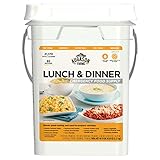
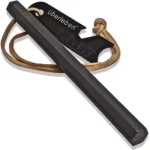

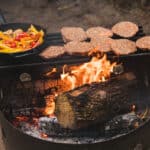






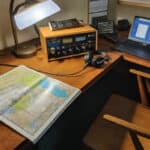


Leave a Reply